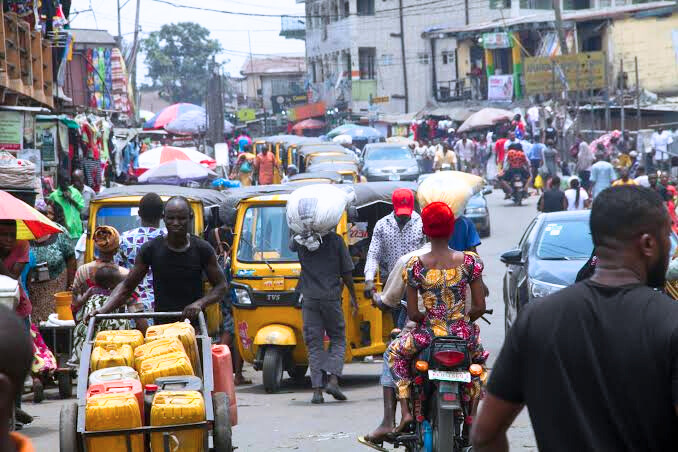
Nigeria’s Economic Recovery: Is the 2025 Growth Target Realistic Amid Global and Domestic Challenges?
In the context of Africa’s evolving economic landscape, Nigeria occupies a critical, albeit increasingly contested, position. Nigeria’s economic trajectory is of significant interest to both domestic and global observers. In 2024, the Nigerian government set an ambitious target: a robust economic recovery leading to a 6% annual growth rate by 2025. This goal comes in the midst of a challenging global economic environment and deep-seated domestic structural issues. A nuanced analysis is required to understand the feasibility of this target, considering both the internal and external factors influencing the Nigerian economy.
Conceptualizing Nigeria’s Economic Recovery:
The global economy is currently navigating a period of heightened uncertainty, with inflationary pressures, energy market volatility, and geopolitical instability affecting nations across the world. For Nigeria, a nation highly dependent on oil exports for over 70% of government revenue, global oil price fluctuations are critical to its fiscal health. While oil price surges, such as those seen during the Russia-Ukraine war, can temporarily boost Nigeria’s revenues, this windfall is often short-lived. The long-term structural issue remains Nigeria’s over-reliance on a commodity subject to global price volatility. Any significant price drop or shift toward renewable energy could undermine future oil revenues, presenting a substantial risk to the country’s economic recovery ambitions.
Moreover, inflation is not only a domestic issue but a global one. The supply chain disruptions caused by the pandemic, coupled with the global energy crisis, have exacerbated inflation, leading to increased food prices, higher fuel costs, and reduced purchasing power. In Nigeria, this manifests in an elevated inflation rate, which reached double digits for much of 2023 and continues to strain household budgets. This persistent inflationary pressure is not easily controllable, given its dependence on external variables like the price of imported goods, especially fuel and food. It will be exceedingly difficult for Nigeria to sustain growth while managing the high inflation burden unless there is substantial intervention to stabilize prices, which is unlikely to happen rapidly.
The Structural Barriers Within: The Achilles’ Heel
Domestically, Nigeria’s economic recovery is stymied by a set of structural challenges that have impeded its long-term development. Despite the government’s intentions to diversify the economy away from oil, Nigeria remains overly reliant on crude oil exports. The diversification efforts have yet to yield substantial results, with the non-oil sectors like agriculture, technology, and manufacturing still underdeveloped and vulnerable to the broader economic volatility. Although there are promising signs of growth in these sectors, such as the rise of Nigeria’s fintech industry, these sectors have not yet been able to take up the slack left by declining oil revenues.
Moreover, the country’s poor infrastructure particularly in energy, transportation, and technology continues to pose significant constraints to growth. Power shortages are a persistent problem that limits industrial output, while inadequate road networks and ports hamper the efficiency of trade. Despite several policy initiatives aimed at addressing these issues, the pace of infrastructural development remains slow. Furthermore, Nigeria’s business environment is encumbered by inefficiencies within the public sector, corruption, and an unreliable legal system. These challenges undermine investor confidence and complicate the implementation of reforms.
While the Nigerian government has undertaken fiscal reforms to improve tax collection and reduce spending, these measures alone are unlikely to generate the level of domestic revenue necessary for long-term growth. The informal sector remains a key contributor to the economy, but it is poorly taxed and largely outside the formal economy, making comprehensive fiscal reform difficult.
Political and Security Landscape: Impediments to Implementation
One of the key factors that will determine the success or failure of Nigeria’s economic recovery plan is political stability. The 2025 elections could either provide the country with a leadership transition that catalyzes economic reforms or lead to political instability that further hinders progress. The political environment in Nigeria is often characterized by uncertainty, with shifting allegiances and a history of delayed or incomplete implementation of key reforms.
In addition, Nigeria’s security situation remains a major challenge. The country faces persistent insurgencies in the northeast, rising banditry in the northwest, and general insecurity that disrupts business activities, hampers trade, and diverts much-needed resources. The economic cost of insecurity is staggering, as it exacerbates inflation, reduces foreign direct investment, and raises the costs of doing business.
The Case for Optimism: Targeting Sustainable Growth
Despite the significant challenges, there is a plausible case for optimism regarding Nigeria’s 2025 growth target. The Nigerian government has undertaken reforms in key sectors like agriculture, manufacturing, and digital technology, with substantial growth in areas like fintech and mobile telecommunications. These sectors have demonstrated resilience and potential for growth, especially with an increasingly youthful population that is adept at adapting to new technologies. The government has also sought to ease business regulations and improve the ease of doing business, which, if fully implemented, could unlock further private sector investment.
Moreover, if the Nigerian government can successfully implement its energy and infrastructure reforms, including power sector reforms, it could alleviate some of the structural constraints that limit growth. Improving electricity generation and distribution, expanding roads, and modernizing ports would not only boost industrial output but also attract foreign investment. The global shift toward digitalization presents another opportunity for Nigeria to leapfrog traditional infrastructure constraints and position itself as a leader in the African tech ecosystem.
Realistic Outlook
So, is the 2025 growth target realistic? The answer lies in the interplay of several variables. On the one hand, Nigeria has substantial untapped potential in sectors like agriculture, digital technology, and manufacturing. If the country can implement the necessary reforms and stabilize its political and security environment, achieving the 6% growth target is not unrealisable. However, this would require a monumental shift in governance, policy implementation, and infrastructure development, areas in which Nigeria has struggled historically.
On the other hand, the global economic environment presents significant risks. Inflationary pressures, oil price volatility, and the geopolitical landscape are factors beyond Nigeria’s control. These external shocks could derail recovery efforts and prevent the country from reaching its growth target. The reality is that, while optimistic, the target may be more achievable in the medium-to-long term rather than by 2025.
In conclusion, Nigeria’s 2025 growth target is both ambitious and fraught with challenges. Achieving sustained recovery will depend not only on favorable external conditions but also on Nigeria’s ability to drive internal reforms, stabilize its political environment, and invest in long-term diversification strategies. While the target may appear daunting in light of the global and domestic headwinds, with focused leadership, robust policy frameworks, and strategic investment in key sectors, Nigeria could lay the foundation for a more sustainable growth trajectory beyond 2025.
Maryjane Eze is the Chief of Staff to the Executive Chairman of the Sixteenth Council, and an Executive Assistant at the Africa Economic Summit.



